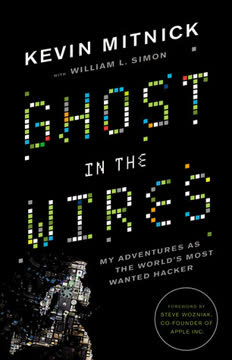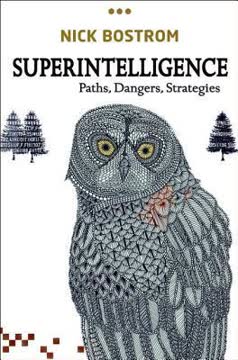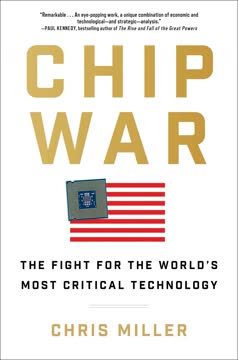Key Takeaways
1. Fiber Optic Networks: The Unseen Foundation of the Future
Through the . . . Olympics, we are preparing thoroughly to show to the world what cutting-edge telecommunications services we have in Korea.
South Korea's Example. South Korea's extensive fiber optic network, showcased during the 2018 Winter Olympics, demonstrates the potential of virtually unlimited, cheap, and ubiquitous communications capacity. This infrastructure enabled real-time, immersive experiences for viewers, highlighting the transformative power of fiber.
Fiber's Role in 5G. The success of 5G wireless technology hinges on the presence of widespread fiber optic networks. Fiber provides the necessary backbone to handle the massive data flow required for advanced wireless communications, making it a critical component of future technological advancements.
Global Competition. Countries like China are aggressively investing in fiber infrastructure, recognizing its importance for economic growth and innovation. The United States risks falling behind in the global race if it fails to prioritize the deployment of last-mile fiber connectivity.
2. The US Lags Behind in Fiber Deployment Due to Policy Failures
In the United States, we cannot even imagine cheap, unlimited communications capacity in our homes.
Digital Divide. The United States suffers from a significant digital divide, with a stark contrast between richer and poorer Americans, rural and urban areas, and white and nonwhite communities. This divide is exacerbated by the lack of affordable, high-capacity fiber connections.
Policy Missteps. Decades of political maneuvering by large private companies, coupled with a lack of federal leadership, have resulted in the failure to upgrade to cheap last-mile fiber connectivity. This has led to a situation where a significant portion of the population lacks access to modern internet services.
Consequences of Inaction. The absence of widespread fiber connectivity hinders progress in crucial areas such as healthcare, education, energy efficiency, and economic development. The United States must address this issue to remain competitive and ensure equal opportunities for all its citizens.
3. Fiber's Superiority: Capacity, Longevity, and Upgradability
If the information-carrying capacity of copper wire is like a two-inch-wide pipe, fiber optic is like a river fifteen miles wide.
Unmatched Bandwidth. Fiber optic cables offer vastly superior bandwidth compared to copper or coaxial cables. This allows for the transmission of massive amounts of data at the speed of light, enabling new applications and services that are impossible with older technologies.
Future-Proof Infrastructure. Once installed, fiber optic cables are incredibly durable and can last for decades. Their capacity can be upgraded almost infinitely by simply swapping out the electronics that encode and power the light pulses, making them a future-proof investment.
Reduced Interference. Unlike copper wires, fiber optic cables are immune to electrical interference, ensuring a more reliable and consistent connection. This is particularly important for applications that require low latency and high data integrity.
4. Community-Driven Fiber Networks: A Modern Electrification
Those areas with people with the greatest vision prospered earliest in the days of electrification.
Historical Parallels. The current movement to build community-controlled fiber networks mirrors the early days of electrification, where local initiatives played a crucial role in bringing electricity to underserved areas. These efforts are driven by a desire to overcome the limitations of private companies and ensure equitable access to essential infrastructure.
Local Solutions. Cities and localities are taking the lead in constructing their own fiber networks, recognizing the importance of local control and community ownership. These initiatives are often met with resistance from incumbent providers, highlighting the need for strong community support and political will.
Models for Success. Various models for community-driven fiber networks exist, including municipal networks, cooperatives, and public-private partnerships. Each approach offers unique advantages and can be tailored to the specific needs and circumstances of a community.
5. The High Cost of Digital Inequality: Economic and Social Consequences
We are amplifying and entrenching existing rural/urban divides and, even more starkly, inequality of opportunity.
Economic Disadvantage. Lack of access to high-speed internet hinders economic growth and limits opportunities for individuals and businesses. Rural areas and low-income communities are particularly affected, as they struggle to compete in an increasingly digital world.
Social Isolation. Digital inequality exacerbates social isolation and limits access to essential services such as healthcare, education, and government resources. This can lead to further marginalization and a widening of the gap between the haves and have-nots.
Democratic Deficit. The inability to participate fully in the digital age undermines democratic participation and civic engagement. When a significant portion of the population lacks access to information and online platforms, their voices are effectively silenced.
6. Fiber's Transformative Impact on Education and Healthcare
Somewhere in our evolution, socializing and connecting with each other became a species characteristic, and fiber will allow us to be present in others’ lives in ways we cannot now imagine.
Revolutionizing Education. Fiber optic networks enable new forms of education, such as remote learning, virtual field trips, and access to online resources. This can level the playing field for students in underserved areas and provide them with opportunities they would otherwise miss.
Telehealth Revolution. Fiber connections facilitate telemedicine, allowing patients to consult with doctors remotely, access specialized care, and monitor their health from home. This is particularly beneficial for elderly individuals, those with chronic illnesses, and people living in rural areas.
Enhanced Communication. High-bandwidth, low-latency fiber connections enable genuine eye contact and empathetic communication at a distance, transforming online interactions and fostering stronger relationships. This can have a profound impact on mental health and overall well-being.
7. The 5G Myth: Wireless Needs Fiber to Thrive
Mobile wireless connections are extraordinarily useful add-ons to fiber. But they depend on fiber being installed everywhere.
Wireless as a Complement. While wireless technology offers convenience and mobility, it is not a substitute for fiber. Wireless connections rely on fiber optic cables to transport data over long distances, making fiber a critical component of any advanced wireless network.
5G's Dependence on Fiber. The promise of 5G wireless technology, with its ultra-fast speeds and low latency, depends on the deployment of dense fiber networks. Without fiber running to every cell site, 5G will be limited in its reach and capabilities.
Avoiding Monopolization. To ensure a competitive 5G landscape, it is crucial to avoid monopolization of fiber infrastructure. Publicly overseen dark fiber, available for lease at reasonable prices, is essential for fostering innovation and preventing a few dominant players from controlling the wireless market.
8. Overcoming Obstacles: Policy Changes for Widespread Fiber Adoption
We are walking the same path today with last-mile fiber optic networks.
Federal Leadership. A strong federal policy framework is needed to promote the deployment of last-mile fiber connectivity. This includes setting clear standards, providing financial incentives, and removing regulatory barriers.
State and Local Action. State and local governments must also play a role in promoting fiber deployment. This includes streamlining permitting processes, ensuring access to rights-of-way, and investing in community-owned networks.
Public Awareness. Widespread public recognition of the importance of last-mile fiber is essential for driving policy changes. By raising awareness of the benefits of fiber and the costs of inaction, communities can mobilize support for initiatives that promote equitable access to high-speed internet.
9. The Power of Local Leadership: Community Champions for Fiber
The only thing we are missing is widespread public recognition of the depth and significance of the last-mile fiber problem—and either a young LBJ or a more seasoned FDR to address it.
Visionary Leaders. Successful fiber deployments require strong local leadership from individuals who are passionate about their communities and committed to ensuring equitable access to high-speed internet. These champions can rally support, navigate political obstacles, and drive progress toward a shared vision.
Community Engagement. Engaging the community in the planning and implementation of fiber projects is crucial for building support and ensuring that the network meets local needs. This includes holding public meetings, conducting surveys, and soliciting feedback from residents and businesses.
Collaboration and Partnerships. Building successful fiber networks requires collaboration between various stakeholders, including local governments, private companies, community organizations, and educational institutions. By working together, these groups can leverage their resources and expertise to achieve common goals.
10. The Importance of Open Access and Neutral Infrastructure
Fiber, he told me, “is like a window. Whatever you send, there will be no barrier.”
Preventing Monopolies. Open access networks, allowing lots of competitive retail choices that run across fiber, are best for consumers and pricing. This requires cities to rip up the streets just once.
Neutrality. The importance was not about speed per se but about not having to wait for your computer to do something.
Level Playing Field. By permitting genuine eye contact at a distance, and the empathy and connection that contact can bring, high-bandwidth, no-delay fiber connections could make the experience of online connection much more like physical presence.
Last updated:
Review Summary
Fiber receives mostly positive reviews for its compelling argument on the importance of high-speed fiber optic networks for economic growth and social equality. Readers appreciate Crawford's clear explanation of the technology, its potential benefits, and the challenges facing its implementation in the US. Many reviewers highlight the book's relevance to current issues of internet access and infrastructure development. Some criticism focuses on repetitive content and a perceived lack of technical depth. Overall, the book is praised for its accessibility and for raising awareness about a critical issue for America's future.
Similar Books










Download PDF
Download EPUB
.epub digital book format is ideal for reading ebooks on phones, tablets, and e-readers.




